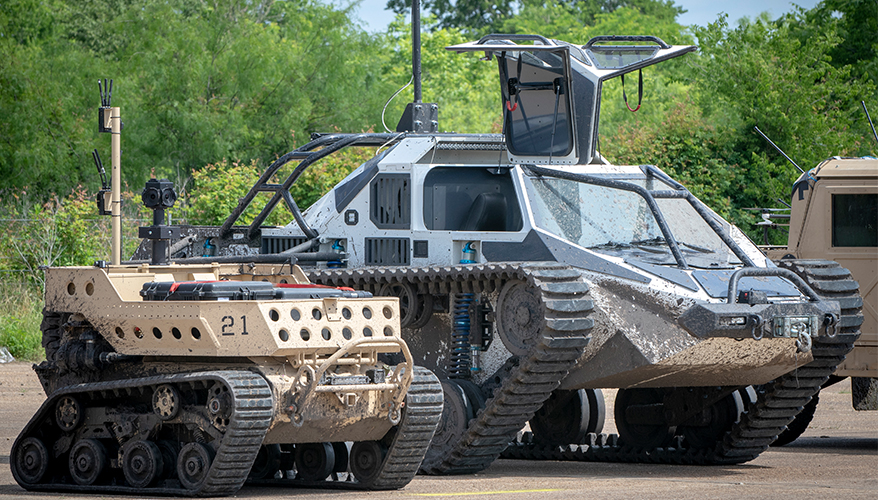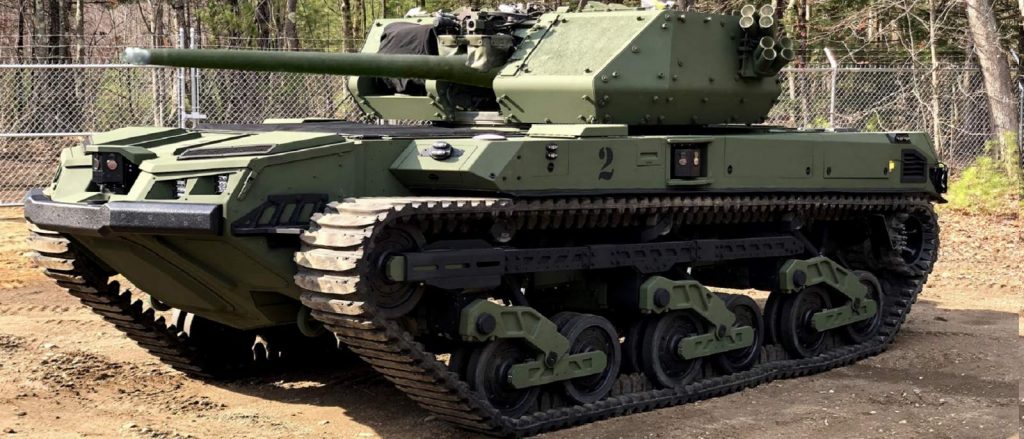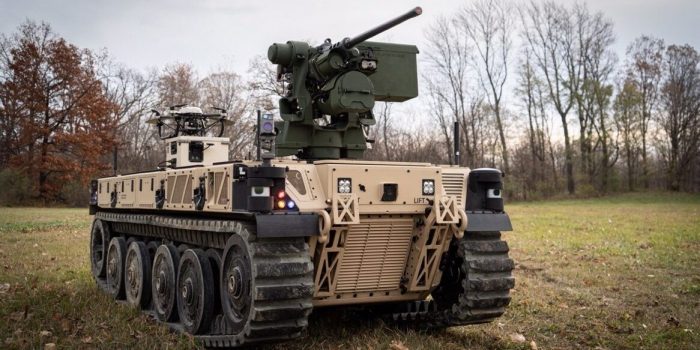Imagine fighting a war against something that plans, moves, and kills faster than any human or machine ever sent into battle. According to a recent Forbes report, the United States Army’s first generation of robotic combat vehicles has begun experimental tests.
“When you’re in the darkness, and you hear these vehicles moving, and you don’t really know where they are, there’s a level of fear that rises up,” said Director of the Next Generation Combat VehicleCross-Functional Team for the U.S. Army Futures Command, Major General Ross Coffman, in the report. “When you couple that with these multi-ton, payload-agnostic war machines that are silent and magically appear, these systems are the equivalent of the Ghosts of Patton’s Army.”

The Army calls these systems Robotic Combat Vehicles or RCVs, and aims to put three versions into the field of combat: an RCV Heavy (RCV-H), an RCV Medium (RCV-M), and an RCV Light (RCV-L). In fact, the large and medium prototypes are already undergoing tests, alongside the armoured personnel carrier and Stryker Dragoon surrogates for the RCV-H, all of which are engaged in exercises in Fort Dix, N.J., and Fort Carson, C.O. So far, small-scale tests remain ongoing. Still, later this year, the new RCV systems will execute a full-scale “Manned-Unmanned Teaming” (MUM-T) Soldier Operational Experiment in Fort Hood, Texas. Once the Army has collected the input of soldiers handling the systems, in addition to the technical results themselves, the service may move forward with a program of record for the RCV-L in 2023.

The technical details for the Medium and Light prototypes, in addition to QinetiQ-Pratt & Miller’s diesel-electric RCV-L and Textron Systems-Howe & Howe’s Ripsaw, are highly complex, but more interesting perhaps is the way the Army may deploy them, hunting, targeting, and destroying. As of writing, there’s little doubt that China and Russia are also developing robotic combat vehicles, but a hint about what to expect from the future of U.S. Army tech lies in Major Coffman’s description. Comparing the RCVs to General George S. Patton’s Third Army of World War II signifies American reconnaissance units deployed behind enemy lines to provide crucial intel for incoming armoured divisions.

Patton’s Third Army moved in light tanks, armoured cars, on foot, and jeeps, rushing through the Ardennes Forrest at great speed, without sacrificing stealth in every movement. According to the Forbes report, a German SS officer was snatched from his staff car with four others by U.S. recon cavalry, driving an M8 armoured car. Upon realizing his situation, he reportedly asked: “You’re the Ghosts, aren’t you? The Ghosts of Patton’s Army.” The RCV-L vehicles will probably provide a similar “eyes-and-ears” service to U.S. Army formations and could likely attack with a wide scope of possible payloads. Coffman views these as first-contact machines, best suited to begin early engagements in an unconventional, yet highly deadly, first move.

“We always want to make the first contact with the smallest [enemy] element,” explained Coffman in the report from Forbes. “That’s doctrine. Why would we ever have that be a human again? Why isn’t that contact made with an unmanned aerial vehicle or an unmanned ground vehicle?” While these new machines already seem impenetrable, ruthless, and cunning, their controllers (or pilots) will be nearby since the effective remote control range from within a Bradley Infantry Fighting Vehicle is likely just more than a mile. There’s some small comfort in knowing these deadly robotic combat vehicles of the very near future still have a human weakness. But then again, the Bradley is a tank. So the weak point is a tank, aiming at you, miles away.


